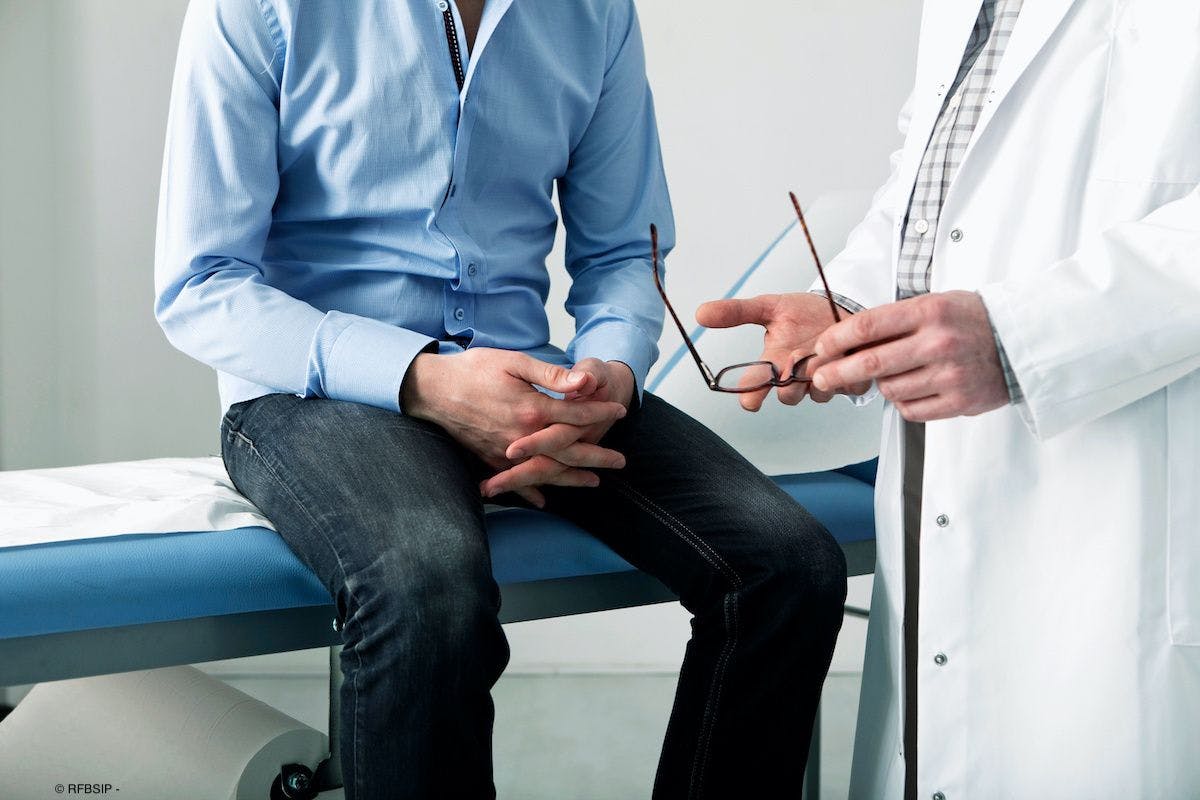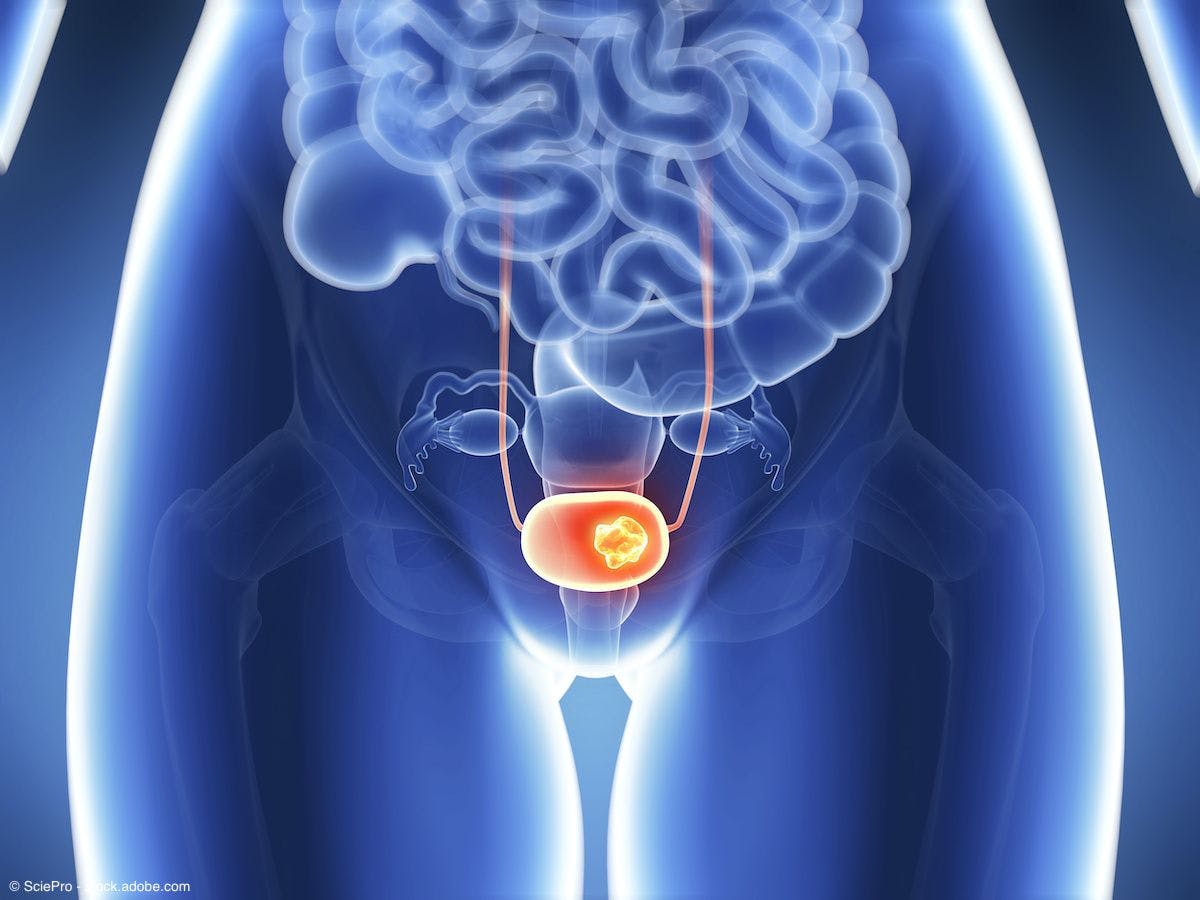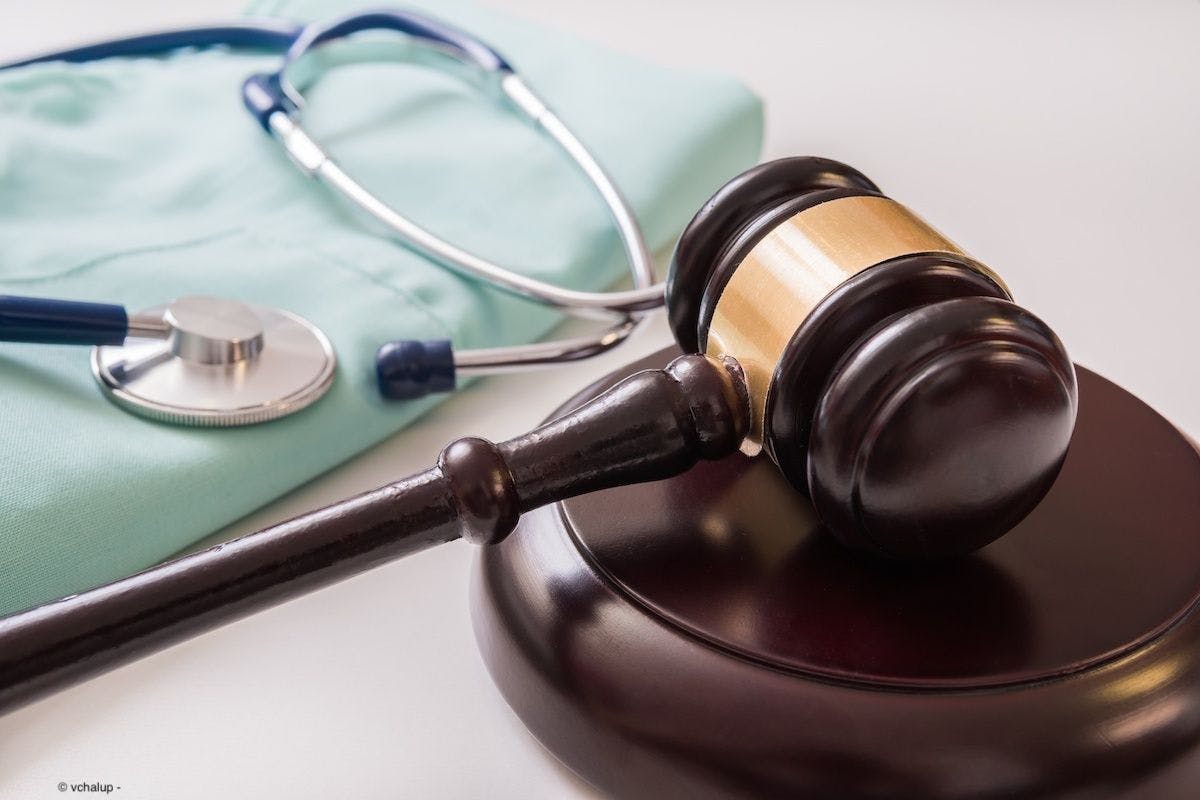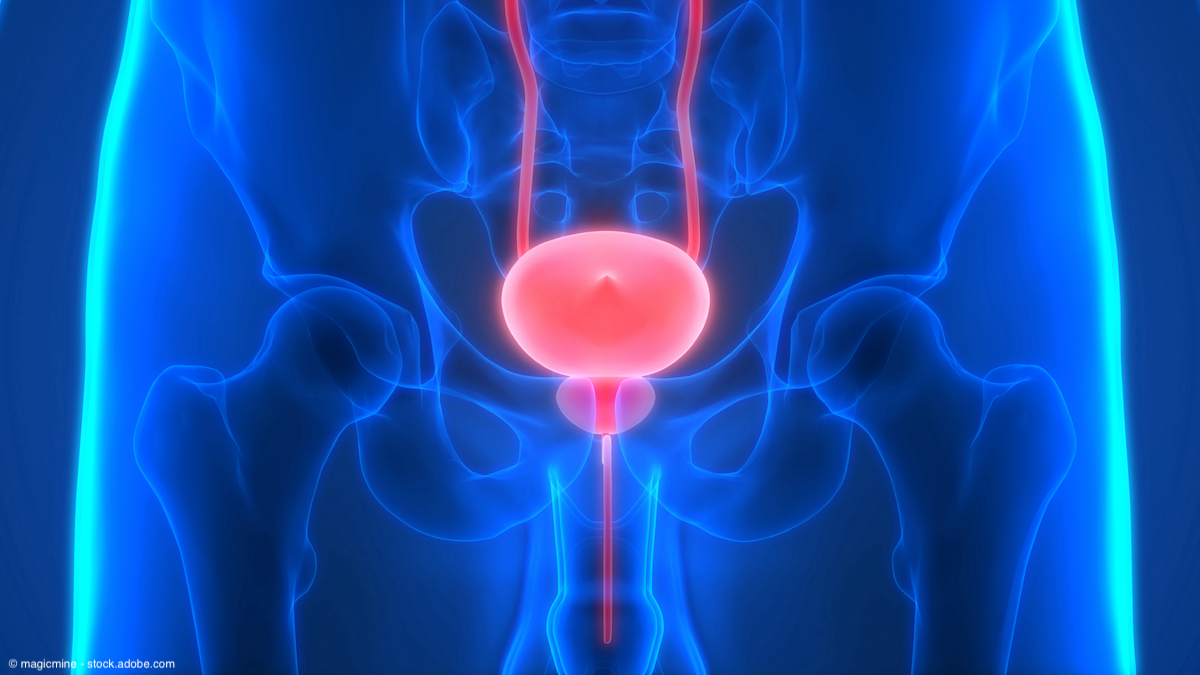Publication
Article
Urology Times Journal
Removal of sacral neuromodulation devices in office found to be safe and efficacious
Author(s):
"This is something [that is] a lot easier for the patient, it's a lot less costly to the health care system to stay out of the operating room, and it's a lot quicker for me," says Howard B. Goldman, MD.
In this interview, Howard B. Goldman, MD, discusses his recent publication, “Removal of sacral neuromodulation devices is an office procedure,”1 which he co-authored alongside Sarah Martin, DO. Goldman is vice chairman of the department of urology at Glickman Urologic Institute at the Cleveland Clinic and Martin is an FPMRS fellow at Cleveland Clinic and a urologist with Duly Health and Care.
Howard B. Goldman, MD

Could you describe the background of this study?
Sacral neuromodulation is a very common third-line treatment for patients who have refractory overactive bladder or fecal incontinence or idiopathic non-obstructive urinary retention. One of the ways it's done is there's usually a test phase first, and one of the ways of doing a test phase is by actually implanting the permanent lead. If it works, then you go ahead and implant the generator. If it doesn't work, you go back a few weeks later and take the lead out. The other way it's done is sometimes you just do a test in the office, and if it works, you put the whole thing in.
Be that as it may, for certain situations, the device has to be removed. [Maybe] because you did the permanent lead implantation on the front end, and it's the 1 out of every 4 or 5 patients that it doesn't work, so you've got to pull the lead out. Or alternatively, it may be a patient who had one put in years ago, and perhaps it's no longer functioning, and they don't want to get it revised or a new battery, or they are having pain at the site, and they just want it out. Or they have other problems now such that this is not an issue and they just want it out. In the old era, where there were sometimes challenges getting MRIs, if somebody had one of these in, it had to be taken out in order for them to get an MRI. So, there are reasons that sometimes, whether it's the lead, or the lead and the generator, [they] have to be removed.
Traditionally, even to this day, this is typically done in the operating room. Whether it's under sedation or general, it's done in the operating room. I push the envelope of doing things that used to be done in the operating room in the office, and things where patients who used to stay in the hospital for 2 to 3 days after an operation, getting them home same day. So, my thought was, if we do this in the office and use a lot of local, to me, there is no reason that this could not be done in the office. By doing it in the office, it saves a lot of time.
It's important to note, this is not done in the Cleveland Clinic main campus procedural rooms. This is done in my suburban office, which has a table, a sink, a computer, and 2 chairs—that kind of situation. From the time the patient walks into the office and we do the paperwork, we lay them down, we prep the area, put some drapes on, numb it up, take it all out, [and] sew the incision closed, from when they walk in until they when they leave is perhaps half an hour or a few minutes more. The actual procedure is anywhere from 10 to 20 minutes. By doing it that way, number 1, patients don't have to take a full day off of work. They don't have to go for any preoperative testing, they don't have to get all this other pre-op stuff, they don't need someone to drive in with them. They can drive themselves in, then drive themselves home. I don't need to give up an hour of my operating room time. It just works so easily. We often do it [where it’s] the last patient of the morning clinic, so [it] bleeds over into lunch a little bit.
We started doing this years ago, and patients did great. My standard practice for the past 5 years has been whenever somebody needs either a lead or the entire system removed, to do it in the office. When I mention this to people, a lot of them say "Oh my gosh, you do that in the office. How do they tolerate it? How is that? How does it go?" So, we decided to look back at a 5-year picture, from 2017 to 2022, of these cases that we did in the office, and see if it was feasible, see if we can get things done, and see how patients did. That essentially was the genesis of this study.
What were some of your notable findings? Were any of those surprising to you and your coauthors?
We had 41 patients where we removed either just the lead or the entire system. It was about 50/50, so just under half the patients were just leads. [Either] patients had had a trial with a permanent lead placement and they weren't successful, so they came in to have the lead taken out, or there were patients up to 6 years after having had the full implant done. Some of them had been there for quite a while.
The company teaching for when you take these out is that you take the generator out of the pocket in the buttock, and then you make another incision in the middle, right where the lead is, and then you pull the lead out that way. Whereas we always try first from that pocket on the side. That way, we can have just 1 incision. What we found is that almost every patient who just had a lead in, we were able to pull it out from that pocket. Half the patients, including 1 of the patients who'd had it in for 2 or 3 years, who had the entire system in, we were able to pull the lead out through that pocket.
Now what's important there is you don't want the lead to break, because then you may not be able to get it; it'll be stuck in the body. What we generally do is we make an incision over the pocket, [and] we get the generator out. I usually cut the wire there. Then we gently pull on the lead, and you can feel if it starts to stretch. If you feel like it starts to stretch, and it's stretching a little too much, then we stop. By just pulling on it, we can see a little indentation under the skin in the middle. Then we know exactly where the wire is, and we numb up that area, just enough for us to put our finger in, feel it, and then pull it out.
Now 3 of the cases, even when we had that incision in the middle and started to pull on it, it didn't want to come. In those cases, we inject a mixture of lidocaine and marcaine, so short-acting and long-acting anesthetic, all the way down to the fascia. In 1 or 2 cases, we followed the lead all the way down to the fascia with our scissors, through the fascia, so we're able to grab it at the level of the little tines that hold it in, and pull that out.
The important things were, we're able to get patients done. Again, half was just the lead—those we almost all got through the pocket. [For] the ones that had the full system in, half we got out through the pocket and half we had to make an incision in the middle to get those out. There was 1 patient who was morbidly obese, that one we did at our main campus where we have fluoroscopy available. I could feel where the generator was, but I had no idea where the lead was going. We did X-ray while we were doing it so we could figure out where the wire was. We did have 1 other patient who, we got the generator out, but when we tried to pull the wire and made our incision in the middle, I just could not find the wire at all. What we did in that case is we closed the incision back up and had her come 2 weeks later to our main office where we have X-ray, and then under X-ray we were able to find it.
Essentially, out of 41 patients, 40 of them, we got it on the front end, and none of them broke. All were taken out completely. We did have that 1 patient I just described where we did have to close it up and do a second stage in a sense, to get the wire out at a later date under X-ray. For those who may want to do it, the procedure is simple. We consent the patient. They [lay] in a prone position on their stomach. We use an alcohol-based prep over the side of the generator and also over the middle, we put drapes on, and then we use a lot of both short- and long-acting numbing medicine, lidocaine [and] marcaine. I inject it all the way down onto the metal of the generator. What that does is it makes like a little pocket of lidocaine. So, when I cut down there, as soon as you cut through there, you see it in front of you. Then again, we try to pull it out.
Sometimes, even when you pull the wire out from the pocket and you're successful, it hurts them a little bit as it gets pulled out. What I do is once we start to pull a little bit, and I see the little dimple in the midline, I inject some lidocaine/marcaine there, even if I'm not making an incision there, just so they don't feel it as much. Then we can pull it out. If it's not coming easily, then we numb up that middle area, make an incision that my pinky or my finger could fit in so we can feel it, and then take it out that way. Then we just wash it out with water, close everything up.
Nobody had an infection. We call these patients 2 days afterwards. There was only 1 patient who needed pain medicine beyond a day or 2. Everyone did great. This is something [that is] a lot easier for the patient, it's a lot less costly to the healthcare system to stay out of the operating room, and it's a lot quicker for me. To me, this makes a lot of sense, and I think we've shown that it can be very successfully done without too much trouble.
Is there any further research on this topic planned? If so, what might that focus on?
Theoretically, somebody could do research where you did patient comfort scales and pain scales and things like that, because it's very easy for me to say the patients all did fine. By and large, they did; I'm not going to tell you that there's not a patient here and there who were [in pain], so we had to give more numbing medicine or things like that. But I think at the end of the day, if you think of all that a patient goes through if they're having surgery, even if it's an outpatient surgery under sedation, just having an IV put in and pre-op blood work and all that stuff, I think the majority of patients would tell you they would take this any day over having to block off a day, get a friend or family to take a day off to bring them in, [and] all that. Otherwise, I think what we've shown is it can be done very easily, very successfully, and my hope would be that people would start moving this out of the ORs and into the office.
What is the take-home message for urologists?
The overall take home message is if you need to remove either a sacral neuromodulation lead or an entire system, it can very easily and successfully be done in the office. You don't have to take someone to the OR, and it works.
Reference
1. Martin S, Goldman HB. Removal of sacral neuromodulation devices is an office procedure. Urology. [published online ahead of print April 6, 2023.] Accessed April 26, 2023. doi: 10.1016/j.urology.2023.03.037.

Newsletter
Stay current with the latest urology news and practice-changing insights — sign up now for the essential updates every urologist needs.




























